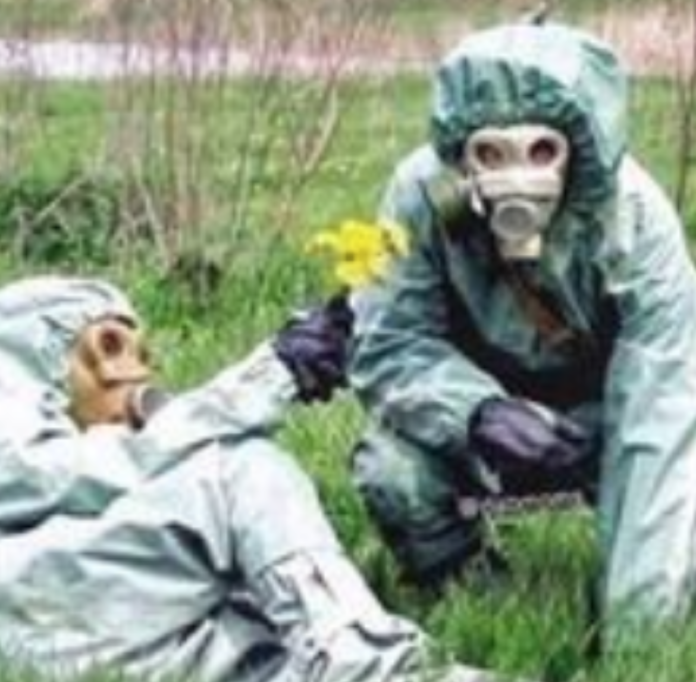In our mass mediated, digitally connected world the meaning of certain words becomes blurred. Metaphors and reality are hard to tell apart. When researchers in my field employ the term ‘media ecosystem’, they are referring to the interconnected array of mass media outlets and social media access points available to users. Yet, the term is also contradictory; an ‘ecosystem’ is ordinarily comprised of animals, vegetation, geology and the biosphere rather than communication technologies.
A similar conflation of meaning occurs in everyday language. To say that an image, phrase, video clip or meme has gone ‘viral’ attests to the scale and speed of transmission. This happened when the South Korean ‘Gangnam Style’ music video reached one billion views on YouTube in December 2012. In the same year, video clips from a short documentary film on child soldiers in Uganda and the activities of militia leader Joseph Kony attracted over 100 million views on YouTube, Vimeo and a ‘Kony 2012’ website operated by Invisible Children Inc. Since then, mediated viralities of all kinds have become commonplace. Before the Internet though, only biological viruses could go viral. Small infectious agents such as bacteria that replicate inside the living cells of any given organism spread to adjacent organisms. Such agents can, potentially, pass through species barriers, from animal-to-animal and animal-to-human. Covid-19 or the Coronavirus generates both kinds of virality. Each must be understood, separately and in tandem, if recent unfolding outbreaks are to be properly evaluated.
Let’s start with the (relatively) good news. Biologically speaking, the virus poses less of a danger than the ‘Spanish’ influenza pandemic of 1918-20. Then, one third of the world`s population was infected and more than 50 million victims died, many in the prime of life. By contrast, the 3.4 per cent fatality rate of Covid-19 outbreaks, so far, primarily affects the elderly and those with pre-existing conditions, such as cardio-vascular disease and diabetes. The rate could well decline as the total number of reported non-fatal cases increases. Since 1920, medical knowledge about viral biology, epidemiology, prevention, quarantines and containment has improved considerably. Over recent decades the World Health Organisation (WHO) and national health authorities have coordinated effective responses to Severe Acute Respiratory Syndrome (SARS) in 2003 and ‘Swine flu’ in 2009. The former outbreak, with very high infection levels and a 10 percent fatality rate, could have been catastrophic.
This is not to deny that Covid-19 is serious. The human consequences are, and will be, substantial. Countries and regions with weak, underfunded health infrastructures may be overwhelmed. National and community health campaigns involving quarantines, hygiene initiatives and communication updates will be less available to poor populations with little media access. In New Zealand, the virus should be manageable, if the spread is not too rapid, and if the fatality rate does not spike because of biological mutation.
Now for the bad news. As I write, the economic, social and psychological impacts of Covid-19 are magnifying. The culprit here is globalisation rather than the virus itself. Human activity is interconnected worldwide. Regional events, decisions and activities have global reach. Global connectivity is complex and multifaceted. Occasional travel between extremely disparate localities contrasts with thick patterns of long-distance migration and international trade. The impact of distant events, decisions or activities upon local circumstances can be enormous. Examples include colonisation, world war and world depression. Of course, none of this is entirely new. Globalisation has co-evolved with a world-spanning capitalist economic system since about 1500, when human activities associated with Western imperialism connected the Americas to Africa and Eurasia. In this context, the outward transmission of diseases from western countries destroyed indigenous populations.
Globalisation in its contemporary form, however, has one distinctive feature. Ideas, goods, information, capital, people and microbes are diffused with unprecedented velocity. These diffusions are enabled by modern technologies of transport and communication – railways, automobiles, airlines, telephone exchanges, terrestrial broadcasting, cables, satellites, interlinked computers, the internet and social media. Our lives are shaped by high-speed interacting global networks associated with financial transactions, trade, travel, international politics, media communication and consumer culture.
Consequently, 24/7 media representations of a momentous, unfolding event can feed back into the event itself via a global loop encompassing radio, television, Facebook, Google ,We-Chat ,the twittersphere, blogosphere, specialist web platforms and portable devices. In these conditions, unexpected and substantial developments will accelerate the generation of feedback loops across multiple global networks. Such developments may involve military conflict, terrorist atrocities, a massive natural disaster or a pandemic. A cascade of associated events will expand and further intensify the mediated interplay of feedback loops.
Contemporary globalisation is not just about fast-moving human interaction, communication and conflict. It is also an expression of global capitalism. Transnational corporations, central banks, investment banks, interlinked stock markets and speculative bubbles in shares, property and derivatives cut across national economies and geo-political rivalries. The whole edifice is inherently fragile, as the spread of Covid-19 has revealed. Slowdowns of just-in-time global supply chains linking manufacturers in China with importers and retailers worldwide are having multiple effects. As Chinese workers lose wages and jobs, the likes of Apple and Walmart revise profit forecasts and trim their own workforces. Countries reliant on Chinese imports will experience balance of payment difficulties. Dwindling supplies of strategic goods such as semi-conductors, computer chips, plastics, telecommunications hardware and automotive components will curtail much business activity within importing countries.
Declining profit projections for large firms are influencing daily share prices, equity trading patterns and investor mood across the world’s major stock markets. This is damaging for the financial sector. As Tony Yates observes “a widespread halt in economic activity could cause insolvencies and defaults on bank loans putting the viability of banks in question and spreading financial disruption even further” (‘Post the 2008 crash…’, Guardian, 2 March). All of these tendencies, together, heighten the risk of a worldwide financial meltdown. Already, global capitalism and national capitalist economies are experiencing weak growth and high levels of private debt. Against this background, real-time viralities of rumour, fear and panic could trigger bankruptcies and bank runs.
Meanwhile, aggregate demand and consumer sentiment fluctuates rapidly. If masses of people cancel or postpone holidays, airline profits fall, hotels empty out, tourism operators fold and local tourism economies collapse. Redundant workers without disposable income cannot support local retailers and receiverships increase. Sensational media headlines and social media clickbait sparks panic buying among consumers worrying about food shortages. Pictures and videos of shoppers emptying shelves and queuing outside stores go viral. Resulting increases in panic buying creates the very food shortages that consumers were trying to avoid.
On the preceding analysis, New Zealand is in a difficult situation. After July 1984, 15 years of neoliberal economic policies undermined economic sovereignty and increased our vulnerability to global capitalist forces. Now, in 2020, the national economy has all but dissolved. Overseas ownership of urban and seafront property, farmland, forests, agricultural value-chains, tourist businesses and hotels coincides with utter dependence on export markets, especially in China. Chinese and South East Asian student revenue props up universities, polytechnics and many high schools. Apart from Kiwibank, our major financial institutions are Australian owned. The BNZ, ANZ, ASB and Westpac will respond to the Coronavirus fall-out according to their own priorities rather than those of the New Zealand government.
Herein lies the difficulty. Government strategies to contain the spread of Covid-19 have been hampered by our economic vulnerabilities and dependencies. Thus, really tough restrictions or bans on incoming travel from countries with proven domestic transmission patterns would be economically disastrous. I am referring to Australia, the United Kingdom and the US, alongside China, Italy, Iran and other countries. Such an intervention would tank the tourist economy and bankrupt entire towns. Without sufficient rates revenue, Queenstown and Rotorua would be virtually ungovernable. Rising unemployment and social breakdown in our major cities would be the eventual result.
As of now, economic pressures are building on all fronts. Tourist numbers have dropped, Chinese and other students are not arriving, forestry exports cannot enter Shanghai and importer-retailers are receiving less stock from their supply chains. Domestically, shoppers are deserting downtown Auckland, and many are spooked by social media gossip and lurid front pages. On Saturday 1 March, for example, the New Zealand Herald’s block-lettered headline ‘Pandemonium’ was accompanied by a vivid picture of a full-suited quarantine officer fumigating a train carriage. Although closer inspection revealed that the photo was taken in Tehran, the local inference was clear – Aucklanders are in panic, supermarkets all over the city are being emptied of canned food, hand sanitisers and toilet paper. This was more than simple reportage. A major newspaper was contributing to the mediation of social fear.
How, then, should Jacinda Adern and her government respond? What are the main priorities? Well, if my globalisation thesis is correct, our leaders should plan for a worst-case scenario. Over committing money and resources to tracing cases from overseas is too reactive. The virus is already here. The cabinet and health officials should be thinking ahead, proactively, as if they are playing chess against a wily opponent. National, regional and community health plans should be pre-funded, organised and coordinated, ready to roll out. Fiscal policies to counteract regional economic downturns should answer to the principle of counter-cyclical Keynesianism. Forget budget responsibility rules and all other neoliberal cant. With historically low interest rates, deficit funding of health infrastructures, cash-strapped educational institutions and local businesses should be paramount. However, large corporate entities with deep financial reservoirs should not be subsidised. The government’s first priority ought to be the economic livelihood of New Zealand citizens. On the travel front, all commercial flights to Western Samoa must be cancelled forthwith. A Covid-19 outbreak there would be impossible to contain, given poor medical facilities and the prevalence of obesity and diabetes among the population.
Finally, central and local government, health experts, doctors, nurses and media professionals must counter the viralities of fake news, fake remedies and the cyber-bullying of victims with a calm, evidence-based communication strategy. Our Prime Minister understands this requirement and has done much to quell the mediation of hysteria. If this performance continues over the coming months as difficulties mount, then she deserves to be re-elected.






Well said, Wayne.
An aspect you have not covered is the extraction of oil and gas, which the entire globalised system is totally dependent on. And the news is all bad for the US and its vassal states because the price has fallen below the break-even point for all high-cost extractors -especially US frackers. The financial repercussions will be enormous when fracking companies that have been ‘eating low interest money’ finally start to go under and the defaulting on payments causes further financial mayhem.
A must-read article for anyone who wants to be well informed:
https://www.zerohedge.com/geopolitical/russia-just-told-world-no
I guess there are also side victims as this disaster shows.
CORONAVIRUS
Coronavirus quarantine hotel collapses, trapping 70
https://www.newshub.co.nz/home/world/2020/03/coronavirus-quarantine-hotel-collapses-trapping-70.html?fbclid=IwAR3keDUeES_JIX2BwpHqhEBIHoek2OLPNSQsBOQBEkA6dJ7y-LLHaiJPhyg
(Does not bode well for NZ with CTV building collapse and few lessons learned from that, aka inexperienced staff, fraudulent and cheap labour, deregulation of construction materials, profiteering and short cuts, poor quality inspections, becoming the norm of construction here).
Isolation in the global economy is not the same for all…
“While some businesses are struggling to keep afloat due to the Covid-19 outbreak and plunging tourism figures, holiday home rental agency Waiheke Unlimited has experienced the opposite.
Managing director Ed Coutts said it had received about “half a dozen or more” enquiries from people living in Hong Kong, Singapore and Thailand who are keen to escape strict health authorities and isolation rules
Three families have already arrived, while others were still considering whether it was possible with current New Zealand travel restrictions.
Two of those families arrived in Auckland via private jet, as they had done previously.
Coutts said they were “higher end people who can afford to take off for months” while things settle down their home countries.”
https://www.stuff.co.nz/national/health/120066023/waiheke-island-boltholes-luxury-holiday-homes-sought-after-by-coronavirus-escapees
Do the maths
https://threadreaderapp.com/thread/1236095180459003909.html
We’re looking at about 1M US cases by the end of April, 2M by ~May 5, 4M by ~May 11, and so on. Exponentials are hard to grasp, but this is how they go….
….By this estimate, by about May 8th, all open hospital beds in the US will be filled….
…If we’re wrong by a factor of two regarding the fraction of severe cases, that only changes the timeline of bed saturation by 6 days in either direction. If 20% of cases require hospitalization, we run out of beds by ~May 2nd
One more thought: you’ve probably seen multiple respected epidemiologists have estimated that 20-70% of world will be infected within the next year. If you use 6-day doubling rate I mentioned above, we land at ~2-6 billion infected by sometime in July of this year. 30/n
Obviously I think the doubling time will start to slow once a sizeable fraction of the population has been infected, simply because of herd immunity and a smaller susceptible population….
The more cases and longer the time this epidemic spans the higher the chances of mutations.
China has set an example shutting down hot spots, travel and movement on the street. Its not that hard and stuff the gutter capitalist that complain about lost profit.
In some ways the new Corona Virus may be a blessing in disguise, as it sends the humanity a stern warning, that it cannot continue as per usual. Also has the drop in travel and economic activity led to a drop in CO2 and other greenhouse gas emissions.
But for the longer term, humans must not be complacent, as viruses of any kind, that includes this one, do regularly mutate, and a more dangerous strain can develop at any given time.
https://www.the-scientist.com/news-opinion/coronaviruss-genetics-reveal-its-global-travels-67183
Humanity has over populated and subdued all life on this planet under its control, nothing much survives these days without it being intended, tolerated or simply too hard to deal with, that is plant life, animals, including insects and reptiles, what ever else.
Humans are everywhere, have created massive urban centres, highly complex technological, economic, social and agricultural systems, which are extremely vulnerable for disturbances such as a globally spreading serious and fatal disease.
The day will come where humanity will be destroyed on a massive scale, once a virus turns up unexpected that is much more dangerous than the one now doing the rounds, and there will be no vaccine or other treatment against it. Science is already struggling to keep up with diseases and its carriers and causes becoming ever more resilient, antibiotic resistant and so.
And as much is done only for profit, there is too little motivation to create medicines and vaccines that may be available to all humans, the poor also.
This creates gaps in the system, vulnerable sports, like computer malware software that does not protect against new viruses.
We are reminded that we are vulnerable, not the superior and invincible species of being that we tend to believe we are.
The next extinction or near extinction will come, it is only a matter of time, i.e. when it will happen.
the new Corona Virus may be a blessing in disguise, as it sends the humanity a stern warning, that it cannot continue as per usual.
Agree, and I hope that people/ societies/ systems/ govts … start to see the need for the changes, and to act on them. Those who try to push on with ‘business as usual’, with the same $$$ goals as before and the same $$$ systems as before, are likely to get ever more deeply into trouble further down the line, and to cause more trouble for others. Whereas those who recognise the need for radical changes and who bring them in and adapt swiftly, will be far more likely to survive and even thrive in the future.
Travel is a dangerously common event taking a vast range of consequences out of human control.
We can await disaster happening this time or next.
The economic sovereignty horse bolted some time ago. One of the members of the business round table at the time(Hugh Fletcher) tried to convince Roger Douglas that we should slowly transition our manufacturing economy to a mix of import substitution (which it was) and export. This would have allowed us to retain our industrial base and high value jobs allowing our producers to become acclimatized to international competition. Naturally he chose to fully open our economy and remove most tariffs almost overnight. This a few years later became known as the shock doctrine. It would be almost impossible to rebuild this capacity now as the interrelationships, dependencies and supply chains no longer exist. There would need to be a certain level of protectionism at the outset otherwise it will always be easier to import. Anathema to neo-liberals and the MSM. This is one reason NZer’s put their money in housing, too hard to create productive enterprise. Another one of the reasons we became a low wage economy and export primary rather than secondary goods. In short unless we have the political will and employ massive resources we are unlikely to be come less economically vulnerable in these situations.
Virality v virility. First it came for the old and the immuno-suppressed. (People with asthma – a large number in NZ) have a weakened immune system. Google entries say that inhaled steroids for asthma increase the weakness.
In NZ: Updated 2018:
Asthma is a chronic condition affecting the airways. Internationally, New Zealand has a high prevalence of asthma, with one in seven children (14 percent) aged 2–14 years (114,000 children) and one in eight adults (12 percent, 459,000 adults) reporting taking current asthma medication[2].
https://www.hqsc.govt.nz/our-programmes/health-quality-evaluation/projects/atlas-of-healthcare-variation/asthma/
Severity in Australia and presumably NZ in Global Asthma Report 2018:
Australia shows as completely red indicating high asthma affected numbers ages 18-45 in 70 countries for 2002-2003. (NZ amongst countries not in sample).
But In the diagram of the world prevalence for 13-14 years for severe asthma in 2002-2003 (Figure 2) it seems the world’s highest – >20% are in the UK and New Zealand with Australia not showing highly.
http://www.globalasthmareport.org/burden/burden.php
Asthma and other respiratory diseases are often linked to the immune system and inflammation. This is because the immune system is thought to be a regulator of asthma and airways inflammation by producing too many immune factors in response to a stimuli that should not cause such a reaction.
https://hmri.org.au/research/viruses-infections-immunity-vaccines-asthma/asthma-respiratory-diseases-immune-system
Inhaled steroids suppress the immune system
“Steroids can and do suppress local immunity,” Dr. Calhoun explains. That said, “when physicians treat patients with asthma with inhaled steroids, we view this in terms of risk and benefit,”
https://www.health.com/condition/asthma/how-safe-are-asthma-drugs
The results suggest a connection between asthma and the immune system’s ability to fight off infections, says co-author Professor Stig E. … “When asthma causes lung damage, they may allow more bacteria and viruses into the body, causing infection,” says Vorup-Jensen, who studies the immune system.
https://sciencenordic.com/asthma-denmark-videnskabdk/asthma-might-weaken-the-bodys-immune-system/1450624
Is this widely known? It seems that people susceptible to various serious diseases are also likely to have asthmatic problems. Higher risk not limited to respiratory conditions
…Dr. Juhn’s research showed that children and adults with asthma have a much higher risk of developing shingles compared to patients who do not have asthma. These findings were replicated by other research groups. Similarly, adult asthma patients have a higher risk of developing community-acquired E. coli blood infection, rheumatoid arthritis, heart attack and diabetes. Children with asthma have higher risks of developing celiac disease and appendicitis compared to those without asthma.
https://alumniassociation.mayo.edu/mayo-research-how-asthma-affects-the-immune-system/
Yeah obviously the Global Economy makes you sick, why do we even do business with a country like China?
https://www.youtube.com/watch?v=WS8UyTwAC5o
I hope the Ministry of Health release important details about the potential sixth confirmed case of the virus. A young man who attended the Tool concert in the general area of a previous confirmed case is now also sick.
The two most important facts they need to share concerns just how close this person was to the subsequent confirmed case. If he was standing next to him then we know what we are dealing with. If however he was 30 feet away or more then we have a major problem. It must also be remembered that the wife of the Tool positive case went to the media and explained her and her husband were not selfish monsters and had “very very very few symptoms”. If that’s correct, it will be at odds with what the Ministry of Health have been telling New Zealanders that only those displaying obvious symptoms can spread the virus.
I’ve repeated numerous times on here already that UK health professionals have been saying for a while now that people who have the virus but are not showing symptoms are spreading the virus.
Comments are closed.